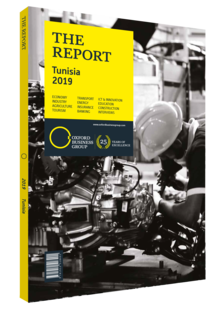Chileshe Kapwepwe, Secretary-General, COMESA: Interview

Interview: Chileshe Kapwepwe
How can digital solutions promote economic integration between COMESA member states?
CHILESHE KAPWEPWE: The 2018 COMESA Heads of State and Government Summit theme was “Towards Digital Economic Integration”. It was designed to motivate member states to fully adopt digital technology, thereby reducing disparities in the state of digitalisation across COMESA countries.
The digital economy is accelerating regional integration in a number of ways. First, it is causing shifts in the regional development paradigm by fostering intra-regional growth in trade and employment. Second, ICT has emerged as a source of dynamism and innovation in the region, enabling virtually every other sector to increase productivity. This has changed the way businesses integrate production processes across borders. Furthermore, this technology has the potential to open up new markets, increase availability of choice and speed up delivery.
Digitising COMESA programmes will facilitate trade and connectivity, and reduce overall transaction costs. A 2018 study on the impact of digital trade on intra-COMESA exports found that if all member states increase implementation of digital trade facilitation measures by 50%, the region would see intra-COMESA exports reach approximately $5.9bn per year. If all member states were to fully implement digital trade facilitation, the region would gain $12.3bn in intra-COMESA exports per year. Member states with low implementation scores should focus on policies that speed up the implementation of digital trade facilitation reforms in order to stimulate intra-COMESA regional trade.
What effect will Tunisia’s COMESA membership have on trade within the organisation?
KAPWEPWE: In 2016 Tunisia traded with 17 COMESA member states, exporting to 15 and importing from all 17. The country exported $624m worth of products, mostly in the form of non-crude petroleum, oils and baby garments. In addition, it imported products worth upwards of $227m, mostly non-crude petroleum and oil, leading to a trade balance of approximately $397m.
The substantial cooperation taking place implies that, with the reduction of tariff rates, joining COMESA can increase trade activity. Furthermore, it has the potential to grow trade within COMESA itself. Tunisia has a trade potential of $13bn in COMESA. If either COMESA or Tunisia redirects 50% of their extra-COMESA exports, this will increase intraCOMESA trade by at least $6.5bn.
For the agreement to be mutually beneficial, member states should ensure the full implementation of the COMESA Free Trade Agreement (FTA). Meanwhile, those who are not participating in the agreement should fast-track the process of joining the FTA. They should also fully implement all other trade facilitation programmes.
In what ways can Tunisia’s geographical position benefit members of the common market?
KAPWEPWE: Tunisia has 11 bilateral trade agreements, mainly with Arab countries. It also is a member of the Arab League and Agadir Agreement, and it participates in the European Free Trade Association and the EU Association Agreement. COMESA member states are set to benefit from Tunisia’s numerous trade memberships and geographical position, which will allow certain products to enter the Tunisian market exempt from tax.
In order to take full advantage of Tunisia’s trade agreements and enjoy use of the European and Middle Eastern markets, member states must establish and enhance production value chains with Tunisia. The hope is to establish production lines, use the country as a trading hub, and set up productive joint ventures with local firms to supply the new markets.
You have reached the limit of premium articles you can view for free.
Choose from the options below to purchase print or digital editions of our Reports. You can also purchase a website subscription giving you unlimited access to all of our Reports online for 12 months.
If you have already purchased this Report or have a website subscription, please login to continue.

